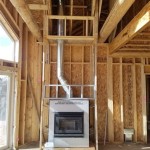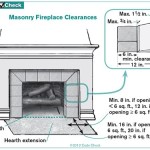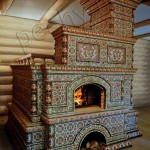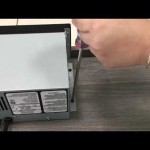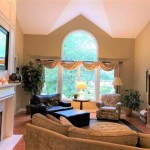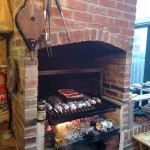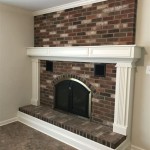Installing A Vented Gas Fireplace: A Comprehensive Guide
Installing a vented gas fireplace is a significant home improvement project that delivers warmth, ambiance, and potentially increases property value. Unlike ventless gas fireplaces, vented models require a chimney or venting system to safely expel combustion byproducts outside the home. This makes the installation process more complex, often necessitating professional expertise to ensure safety and compliance with local building codes. This article outlines the key considerations and steps involved in installing a vented gas fireplace.
Before commencing any installation, it is crucial to understand the different types of vented gas fireplaces available. These typically include direct vent and natural vent models. Direct vent fireplaces draw combustion air from outside the home and vent exhaust gases directly outside through a sealed system, making them more efficient and reducing potential indoor air quality concerns. Natural vent fireplaces, also known as B-vent fireplaces, rely on natural convection to draw air and exhaust gases upwards through a chimney. Choosing the appropriate type depends on existing venting infrastructure, aesthetic preferences, and heating requirements.
Furthermore, local building codes and manufacturer instructions are paramount. Failing to adhere to these regulations could result in hazardous conditions, voided warranties, and potential legal ramifications. A thorough understanding of these prerequisites is essential before beginning any physical installation.
Key Point 1: Planning and Preparation
The initial phase of installing a vented gas fireplace focuses on meticulous planning and preparation. This includes several critical steps.
First, assess the existing structure. Determine if a suitable chimney is already in place and whether it meets the size and material specifications outlined by the fireplace manufacturer. If a new chimney or venting system is necessary, professional consultation is highly recommended to ensure proper design and installation. The chimney must be inspected for any cracks, blockages, or deterioration, which can compromise its functionality and safety. Addressing these issues before installation is crucial to prevent potential hazards.
Second, obtain all necessary permits. Most municipalities require permits for gas appliance installations to ensure compliance with safety standards. Contact the local building department to understand the specific requirements and obtain the necessary approvals. This process may involve submitting detailed plans and undergoing inspections at various stages of the installation.
Third, gather all required materials and tools. This includes the fireplace unit, venting pipes, connectors, gas line fittings, sealant, leveling shims, and necessary tools such as pipe wrenches, screwdrivers, a level, a measuring tape, and a drill with appropriate bits. Having all materials readily available will streamline the installation process and minimize delays.
Fourth, prepare the installation area. This involves clearing the area around the fireplace location, protecting flooring and walls, and ensuring adequate workspace. Consider disconnecting the gas supply to the area as a safety precaution before beginning any work on the gas line. If unsure about disconnecting the gas supply, consult a qualified gas technician.
Key Point 2: Installation Procedure
The installation procedure involves several key steps, each requiring careful attention to detail.
First, position the fireplace unit according to the manufacturer's instructions. Ensure it is level and properly supported using shims if necessary. Accurate placement is crucial for proper venting and aesthetic appeal. Secure the unit to the wall or floor according to the manufacturer's specifications, using appropriate fasteners for the type of wall or floor material.
Second, connect the venting system. For direct vent fireplaces, follow the manufacturer's instructions precisely to assemble and connect the vent pipes. Ensure all connections are secure and sealed to prevent leaks. For natural vent fireplaces, connect the fireplace to the existing chimney using appropriate vent pipes and connectors. Ensure the vent pipes slope upwards towards the chimney to facilitate proper drafting. Chimney liners may be required to ensure optimal performance and safety.
Third, connect the gas line. This step requires extreme caution and should only be performed by a qualified gas technician if the homeowner lacks the necessary expertise. Before connecting the gas line, ensure the gas supply is turned off and properly capped. Use appropriate gas line fittings and sealant to connect the gas line to the fireplace unit. Test all connections for leaks using a gas leak detector or soapy water. Any leaks must be addressed immediately.
Fourth, install the decorative components. Once the fireplace unit is securely in place and the venting and gas lines are properly connected, install the decorative components such as logs, glass beads, or stones according to the manufacturer's instructions. These components enhance the aesthetic appeal of the fireplace and should be arranged to ensure proper flame distribution.
Key Point 3: Testing and Final Checks
After the installation is complete, thorough testing and final checks are essential to ensure safe and efficient operation.
First, test the gas line for leaks. Even after the initial connection, re-test all gas line connections for leaks using a gas leak detector or soapy water. Pay particular attention to connections near the gas valve and fittings. Any leaks must be addressed immediately by a qualified gas technician.
Second, start the fireplace and observe the flame. Ensure the flame burns cleanly and evenly without any unusual colors or odors. Check that the venting system is functioning properly by observing the airflow around the fireplace and chimney. Any signs of backdrafting or improper venting must be addressed immediately.
Third, check the carbon monoxide levels. Use a carbon monoxide detector to ensure that the fireplace is not producing excessive levels of carbon monoxide. Place the detector near the fireplace and in other areas of the home to monitor air quality. If carbon monoxide levels are elevated, turn off the fireplace and contact a qualified technician to investigate the cause.
Fourth, review the manufacturer's instructions and warranty information. Ensure a complete understanding of the fireplace's operation, maintenance requirements, and warranty terms. Schedule regular maintenance checks to ensure the fireplace continues to operate safely and efficiently.
Fifth, receive professional inspection. A final inspection by a qualified building inspector or gas technician is highly recommended. This inspection ensures compliance with local building codes and confirms the safety and proper functioning of the fireplace. Correct any deficiencies identified during the inspection to ensure optimal performance and safety.
Finally, familiarize all household members with the operation and safety features of the new fireplace. This includes proper lighting and extinguishing procedures, carbon monoxide detector alerts, and emergency shutdown protocols. Educating all household members about these aspects is crucial for ensuring their safety and well-being.
Properly installing a vented gas fireplace requires careful planning, adherence to safety regulations, and attention to detail. While this guide provides a comprehensive overview of the installation process, it is essential to consult with qualified professionals for any aspects that exceed one's expertise. Prioritizing safety and compliance with building codes will ensure a safe and enjoyable fireplace experience.
Furthermore, understanding the specific requirements of the chosen fireplace model is critical. Each model may have unique installation instructions and venting requirements that must be followed precisely. Referencing the manufacturer's documentation throughout the installation process is essential to avoid errors and ensure optimal performance. Neglecting these details could lead to safety hazards, reduced efficiency, and potential damage to the fireplace or the surrounding structure.
Continuing education regarding fireplace safety and maintenance is also advisable. Staying informed about the latest safety guidelines and best practices will help homeowners maintain a safe and efficient heating system. Local fire departments and gas companies often offer educational resources and workshops on fireplace safety. Participating in these programs can enhance homeowners' understanding of fireplace operation and maintenance.
The installation of a vented gas fireplace, while offering numerous benefits, should be approached with a clear understanding of the complexities and potential hazards involved. Consulting with experienced professionals and adhering to all applicable safety regulations and manufacturer instructions is paramount to ensuring a successful and safe installation.
Understanding How Direct Vent Works Heat Glo

How To Select And Install A Gas Fireplace Log Set Fireplaces Direct Learning Center

What Are The Best Ways To Vent A Gas Fireplace Zoroast
Gas Fireplace Venting Explained Heat Glo

If You Have A Gas Fireplace It May Or Not Chimney Flue

Benefits Of Direct Vent Fireplaces

What Is A Direct Vent Fireplace Fireplaces Learning Center
Gas Fireplace Venting Explained Heat Glo

Vented Vs B Vent Direct Free Dixie S

Installing A Gas Fireplace
Related Posts

